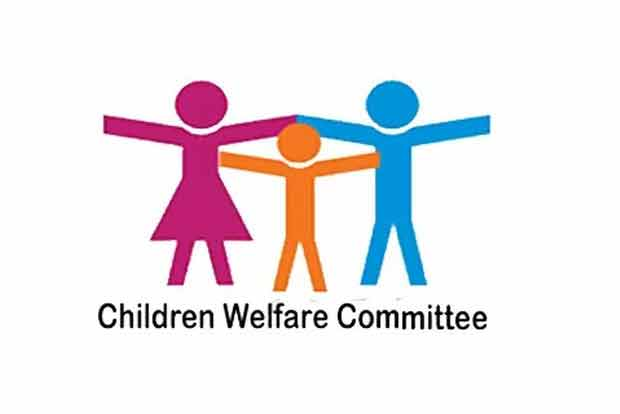THE CONCEPT OF WELFARE OF CHILD IN INDIA
Social welfare is defined as an organizational structure of social services designed to support
individual groups and communities to accomplish meaningful lives. Welfare programs are
meant to restructure the present conditions of the weaker section. Appropriate management of
the programs requires a better understanding of the welfare services provided to the
marginalized and the weaker sections of the society. According to the 2011 Census, 40 percent
of the nation's population constitutes of children. India ranks highest in the population of
children. One-third of the total population of India comprises of the children and they are in
the age group of 0-14 years. A child belonging to the weaker section of the societies face many
hurdle and problems like malnutrition, anaemia, infant mortality, infectious diseases, child
labour, and juvenile diligence. Children in India are at a disadvantage position as compared to
their counterparts in the developed world.

CHILD WELFARE
Child welfare refers to programs and services that focus on the physical, social, and
psychological well-being of the children, particularly those who are poor or lack appropriate
parental care and adult supervision. Child welfare in the Western world, particularly in larger
cities, encompasses a wide range of highly specialized services that go far beyond physical
survival and include issues such as personality development, occupational guidance, and
leisure time utilization. Child welfare services in less-developed countries, as well as in the
aftermath of war and disasters, may only use the most basic steps to keep children alive, such
as emergency feeding, shelter, and public health precautions. The general standard of living,
the degree of education, and the country's financial resources are all aspects to consider.
Two major centrally sponsored child welfare programs are:
Integrated Child Development Services Scheme for child development.
Integrated Child Protection Scheme for the care and protection of the child in conflict
with the law and need of care and protection.
India after signing International Treatises and Conventions has brought many changes in its
legislation to provide welfare to the child and to reduce the sufferings of the children (Sharma,
2012).
There are many schemes formed by the Indian government for the welfare of children
Mid-day meal Scheme
Integrated Child Development Services Scheme (ICDS)
Integrated Child Protection Scheme (ICPS)
Schemes for Education of Children
Right of children for free and compulsory Education (RTE) Act
Sarva Shiksha Abhiyan (SSA)
Rashtriya Madhyamik Shiksha Abhiyan (RMSA)
The integrated program for street children
Kishori Shakti Yojana
Balika Samriddhi Yojana
Nutrition Programme for Adolescent girls
Childline Services
Initiatives to combat trafficking of women and children
Rajiv Gandhi National Creche Scheme for the children of working mothers
Shishu Greha Scheme
Reproductive and Child Health Programme
National Child Labour Project
Institutional framework for Child Welfare
The National Commission for Protection of Child Rights (NCPCR)
Central Adoption Resource Agency (CARA)
National Institute of Public Cooperation and Child Development (NIPCCD)
Constitutional provision proved to children for their welfare
Article 24:- No child below the age of 14 shall be employed at the work.
Article 39:- The directive principle of state policy.
Article 45:- state to Endeavour to provide free and compulsory education for all
children up to the age of 14 years.
The state has enacted various legislations for welfare
The Hindu adaptation and maintenance Act 1956.
The women and children institution Act of 1960.
State children Act.
Factories Act 1948.
Plantation labour Act 1951.
The mines Act 1952.
Juvenile Justice Act 1986.
Indian child welfare ACT 1978
Need for child welfare
The obstacles and problems that children face in our society was one of the main reason for
implementing child welfare systems. In 1974, 22nd the government adopted a child protection
policy. The policies and laws were put in place to help and address such issues and to protect
children's rights. In addition, the government established a working committee to oversee the
progress. The group collaborated with various governments and administrations from the
district, state, and UT. Apart from this, the committee collaborated with all non-governmental
and governmental organizations.
Importance for child welfare
There are several reasons why child welfare should be implemented. One of the most
compelling reasons for implementation was to reduce the mortality rates of the baby and the
mother. Another motivation was to aid in the regulation and control of malnutrition in some of
the country's isolated places. The government also sought to have every child birth in the
country recorded, for the statistical purpose. The government's goal with child welfare is to
eliminate the problem of illiteracy among youngsters. Apart from that, the government wants
to eliminate female feticide, childhood marriage, and the protection of girls from human
trafficking.
CONCLUSION
Child welfare also refers to safeguarding children's rights against being exploited, neglected,
or physically or mentally mistreated. It also seeks to eradicate the issue of child labour within
the country. This action would also help to defend the child's social and economic rights,
ensuring that they are not exploited economically. Child welfare is also developed to ensure
that all other policies are checked and reviewed. This will assist in ensuring that the laws
enacted for child welfare are safeguarded in the interest of the child's right to safety and
security.
The government wants to implement and take great steps to defend a child’s basic rights in the
country by implementing child welfare plans and initiatives.
REFERENCE
https://www.britannica.com/topic/child-welfare
https://www.britannica.com/topic/child-welfare
https://www.newworldencyclopedia.org/entry/Child_welfar
